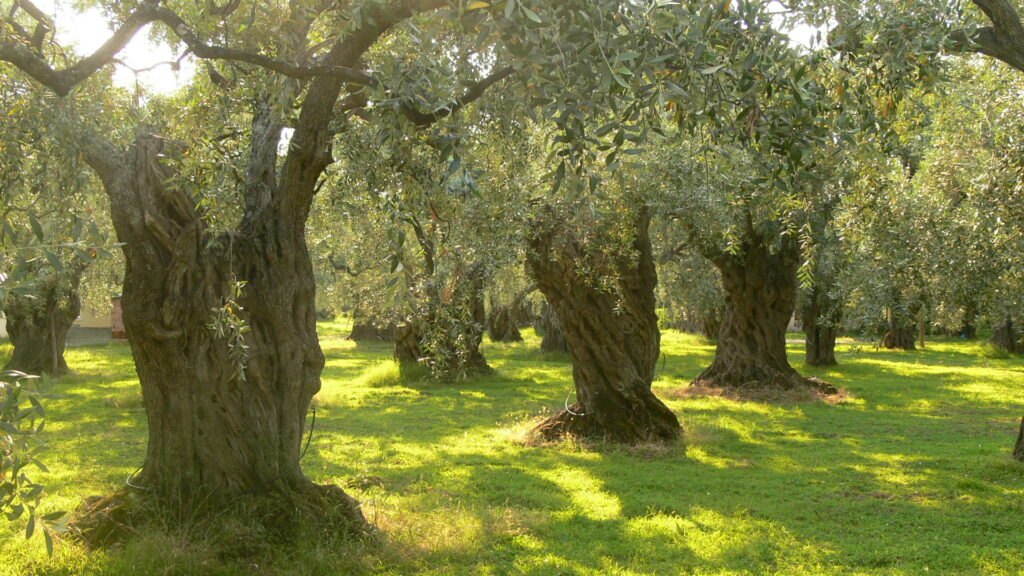
Humans are not the only species susceptible to bugs from foreign shores. Olive trees in Italy are falling prey to a nasty bacterium, Xylella fastidiosa, that has hitched a ride on unwanted migrants. In this case the migrants were insects on plants originating from the Americas. X. fastidiosa causes Olive Quick Decline Syndrome (OQDS) and affects not only olive trees but also grape vines and citrus trees.
The problem requires urgent action, with 100,000’s of trees in southern Italy affected and the disease spreading elsewhere in southern Europe. There is no cure. Early detection and attack against the insect vectors is the best course of action. Unfortunately the quick decline of infected trees means that action can be too late to save the trees or contain the spread of the disease. According to the European Commission it is one of the most dangerous plant diseases in the world today.
As in the struggle against COVID-19, scientists have invented sensitive PCR (Polymerase Chain Reaction) tests for the disease but they are rather slow and require adequate sampling. There are also much quicker biochemical (ELISA – Enzyme Linked Immuno-Sorption Assay) tests but these are not as robust. What to do?
A team at the Polytechnic University of Bari in Italy have developed a rapid non-invasive method using multispectral imaging with cameras carried aloft by drones. UAVs (Unmanned Autonomous Vehicles) are used to gather not just images of olive trees in conventional colour but in five chosen channels within the visible/near-infrared spectrum.
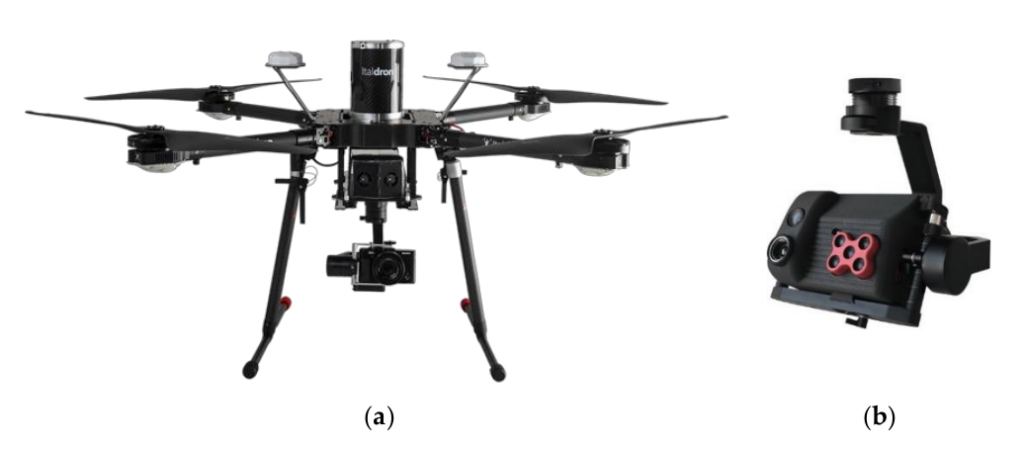
Writing recently in the journal Sensors, the Bari team carefully describe how drones were flown over healthy and diseased olive groves and the image data analysed. Conventional images of trees in the largely diseased grove (Squinzano) and healthy grove (San Vito dei Normanii) looked very similar. Multispectral images from San Vito dei Normanii are shown below.
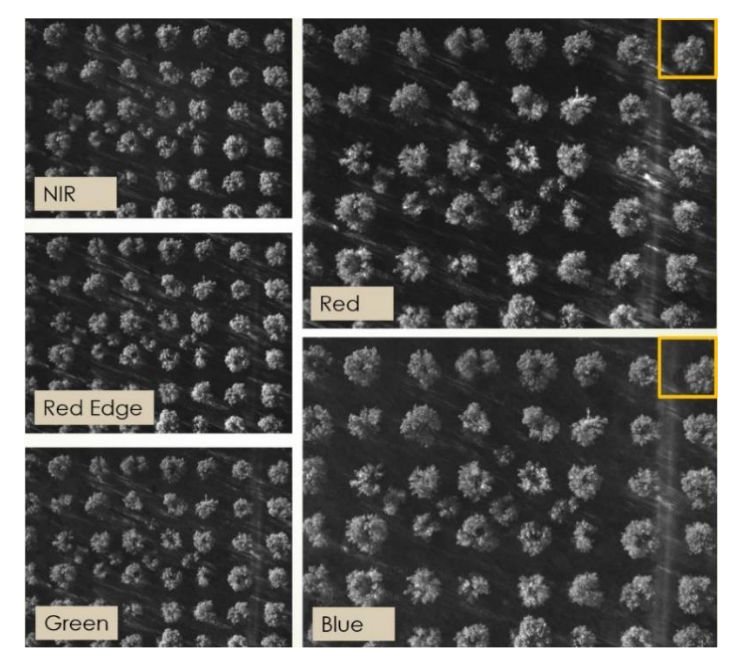
It is only when the angles, scales, sunlight illumination are all corrected for that the raw data can be analysed. Using a clever mathematical method know as linear determinant analysis (LDA), the Bari team were able to classify individual trees as healthy or diseased. They then used that classification to calculate a probability that each pixel in separate olive grove images was from a diseased tree.
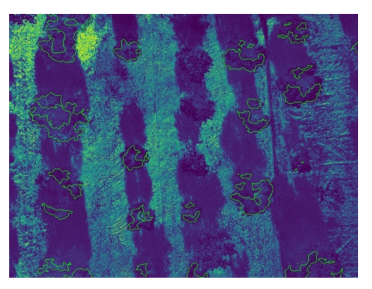
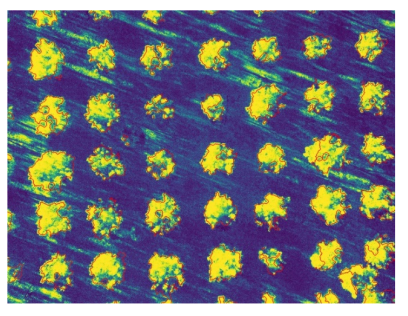
It is immediately obvious from the heatmap probability images of the two olive groves above, which one is infected. The hot yellow colours of the lower image from Squinzano contrast strikingly with the cold dark tree areas of the image from San Vito dei Normanii. The Bari team calculated a 98% sensitivity and 100% precision for the multispectral imaging determination of diseased trees.
Although impressive, this Xylella Fastidiosa discrimination method still requires further development work to be useful in the fight against its spread in Europe. The methods used seem transferable to other olive groves and probably other species but they need to be tested against crops where the disease state is not know to the monitoring team beforehand. It also needs to be proved that the disease can be identified at an earlier stage than is possible with PCR or ELISA tests.
Just as we are finding with COVID-19, a clever test is only the first part of a potential solution. We still need effective test, trace and isolate actions as links in a strong chain to secure the unwanted gadabouts.
For more information read the full report on multispectral imaging of Xylella fastidiosa here.
European Commission advice on Xylella fastidiosa can be found here.
An EU video report on Xylella fastidiosa: